11 Interesting Facts About Asteroids You Never Knew (With Pictures)
Last Updated on
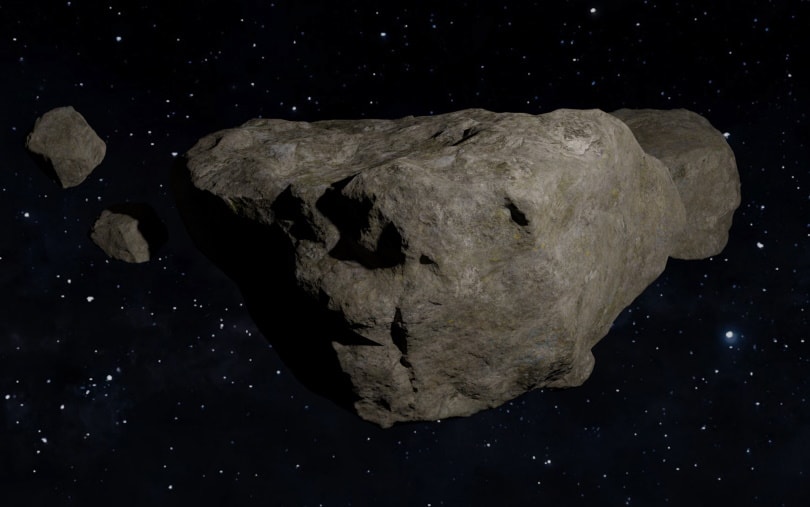
Asteroids are small, rocky objects that orbit the Sun, much like the planets in our solar system. Because asteroids are too small to be considered planets, they are also sometimes called planetoids or minor planets. Some asteroids, like Ceres, even go on to become dwarf planets.
Asteroids house many of the keys necessary for unlocking the secrets of our solar system and its formation. Many asteroids have also hit Earth in the past, with devastating consequences such as the theorized extinction of the dinosaurs, nuclear winters, and worldwide famines. Asteroids are also extremely valuable because many of them are storehouses of some of the rarest and most precious metals on Earth, including iridium, palladium, gold, and titanium. This makes asteroids of particular interest to scientists, astronomers, and investors who see a future in asteroid mining.
Asteroids are mysterious, dynamic, and complex worlds that are all unique from each other. They hide many secrets and are some of the most exciting things to study in our solar system, with NASA having identified over 1 million asteroids to date. Let’s look at some interesting facts you may not know about asteroids and learn what lies inside these distant, rocky, and icy worlds.

The 11 Interesting Facts About Asteroids
1. Asteroids date back to the birth of the solar system
Asteroids are the rubble from the early formation of our solar system about 4.6 billion years ago, thought to have originated from the protoplanetary disk of dust and gas following the birth of our Sun. Much of the matter in the disk violently collided with each other to form the early planets of our solar system, giving birth to small terrestrial worlds like Mercury and gas giants like Saturn.
The leftover debris from these collisions is thought to have formed the asteroids as we know them today. However, scientists also theorize that the birth of the enormous Jupiter once prevented any planetary bodies from forming between it and Mars. This explains the asteroid belt, which is hypothesized to have been formed by the local bodies colliding and fragmenting into smaller chunks during Jupiter’s birth.
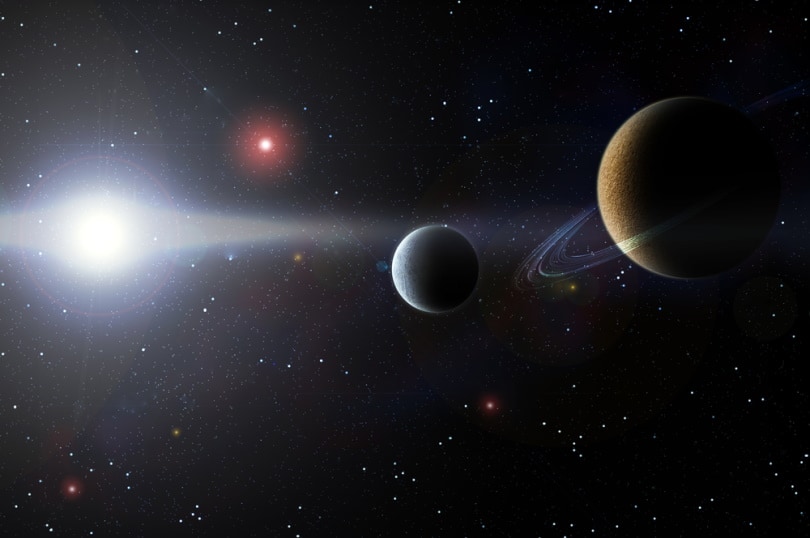
2. Asteroids are irregularly shaped
Asteroids come in a wide array of shapes, sizes, colors, and compositions. No two asteroids are alike, and most of them are irregularly shaped due to their collisions with other bodies. Asteroids range in size from over 620 miles to a few dozen feet across and are virtually limitless in their physical characteristics.
Although most asteroids are arbitrarily shaped, some, like Ceres, are large enough to become dwarf planets. This means that the asteroid has a large enough attractive gravitational force to maintain hydrostatic equilibrium or a sphere-like shape. Some asteroids, like Vesta, even have evidence of ancient volcanic activity, which can further shape their surfaces.
3. Most asteroids are found in three regions of the solar system
NASA has classified 1,113,527 known asteroids within our solar system, although there are likely millions more to be discovered. Asteroids are commonly found in three regions within our solar system, with the majority being found in the asteroid belt. However, a sizable fraction of asteroids can be found in front of and behind other planets and near Earth. These are called Trojan and Near-Earth asteroids, respectively.
- The Main Asteroid Belt: Most asteroids lie within the central asteroid belt, the smallest circumstellar disc in our solar system between the orbits of Mars and Jupiter. About half the asteroid belt’s mass is stored in its four largest bodies, Ceres, Vesta, Palla, and Hygiea. A vast number of asteroids of all sizes lie in this belt, with each type varying in rarity as the ring extends outwards. Some of the more distant asteroids can even contain volatile ices and rare materials.
- Trojan Asteroids: Many asteroids lie outside the asteroid belt and orbit the Sun on the same path as a much larger planet, accumulating at particular positions called Lagrange points. Lagrange points are used by astrodynamicists extensively because objects sent to them tend to stay in a specific position. This is advantageous because satellites at these points have to make less fuel-intensive orbit corrections to maintain their position. At a body’s Lagrange points, the gravitational pull of the Sun and the body are balanced and equal to the centrifugal force, effectively making a “gravity well” for asteroids or spacecraft to sit in. Asteroids that sit at these points are called “Trojan asteroids” and are generally found at the two stable Lagrange points about 60 degrees ahead of and behind a planet. Some planets, like Jupiter, have over 10,000 Trojan asteroids, while other planets, like Mars, have only a handful. On the other hand, Earth has 2 Trojan asteroids, the second of which was discovered recently in February of 2022.
- Near-Earth Asteroids: There are over 27,000 known near-Earth asteroids that orbit in close proximity to the Earth. Asteroids are considered to be “near-Earth” if their perihelion (their closest approach to the Sun) is less than 1.3 AU (astronomical units), or 1.3 times the distance of the Earth from the Sun. Near-Earth asteroids are classified into different groups based on their orbit’s semi-major axis, perihelion distance, and aphelion distance, three orbital parameters which describe the asteroid’s path relative to Earth. Sparing the mathematical complexity, the orbital classification of near-Earth asteroids includes the Atiras, Athens, Apollos, and Amors groups.

- The Atiras Group orbits strictly inside the Earth’s orbit.
- The Athens Group has orbits that cross the Earth’s with a semi-major axis less than 1 AU.
- The Apollos Group of asteroids have orbits that cross the Earth’s with a semi-major axis greater than 1 AU.
- The Amors Group orbits completely outside of Earth’s orbit, with some crossing the orbit of Mars.
4. Asteroids can have moons and rings
If an asteroid is big enough, it has the potential to attract a small companion moon, with more than 150 documented asteroids being shown to have one or multiple moons. Many different asteroid system configurations have been observed, including binary, triple, and quadruple asteroid systems.
In a binary system, two asteroids of roughly the same size orbit each other, with this same concept also applying to triple and quadruple asteroid systems. Some asteroids even become the moons of other planets, which was likely the fate of Mars’ moons Phobos and Deimos. These moons are most similar to C-type asteroids in composition and size, being some of the smallest moons in the solar system.
Some asteroids even have rings, with the discovery of the asteroid Chariklo making it the fifth known ringed world in our solar system, in addition to the gas giant planets. As astronomers observed Chariklo passing in front of a star, they discovered that it had two dense, narrow rings. This could indicate that Chariklo may even have a moon, although it has not been found yet.
5. Asteroids are rich in resources
The asteroid belt alone is estimated to contain over $700 quintillion worth of natural resources. Although you may envision asteroids as hunks of rock and ice, they are actually home to literal tons of rare and precious metals. Some asteroids have nearly limitless supplies of iron, nickel, iridium, palladium, platinum, gold, magnesium, titanium, cobalt, and other rare elements.
Some asteroids are even theorized to hold more precious metals than the entirety of Earth’s metal reserves. This makes robotic asteroid mining a topic of interest, particularly since we may even be able to extract water from asteroids. However, this likely won’t happen for a few decades as current technology does not make asteroid mining a financially viable option.
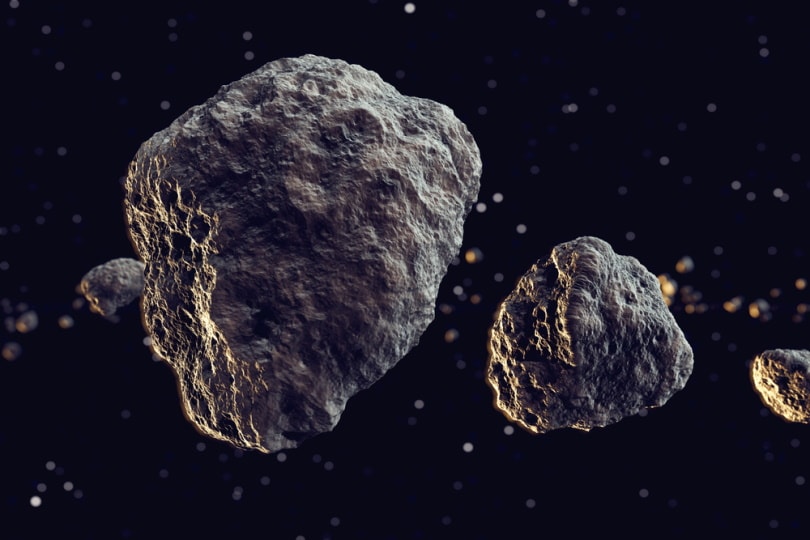
6. Asteroids fall into three main categories
Depending on their composition, asteroids can be classified into a huge variety of spectral categories and subcategories. There are three main categories, including C-type, S-type, and M-type asteroids which are the most common in our solar system. However, there are multiple complicated categories and subcategories that classify increasingly rare asteroids.
- C-Type Asteroids: C-type, or carbonaceous asteroids, make up approximately 75% of all asteroids and are thus the most common variety. Largely carbon surfaces with low albedos characterize these asteroids, meaning they are very dark, not as reflective, or bright. C-Type asteroids may actually make up a larger portion of all asteroids in our solar system because their darker surfaces make them less detectable. This class of asteroids is most commonly found at the outer edges of the Asteroid Belt, where 80% of the asteroids found are C-type. Interestingly, C-type asteroids are composed of elements similar to the Sun, however, they do not contain volatile materials such as hydrogen and helium.
- S-Type Asteroids: S-type, or silicaceous asteroids, account for about 17% of documented asteroids. These asteroids are greenish-red in color and can most commonly be found in the inner reaches of the asteroid belt. S-type asteroids are primarily made of nickel, iron, and magnesium silicates, making them rocky and relatively high in density.
- M-Type Asteroids: M-type, or metallic asteroids, are generally tones of red in color and rich in metals such as iron and nickel. These asteroids are widely thought to be the source of iron meteorites on Earth and make up most of the other asteroids in our solar system. Scientists theorize that M-type asteroids are fragments of the cores of early protoplanets that underwent massive collisions during the early history of our solar system. M-type asteroids can usually be found in the mid-Asteroid belt and get increasingly rare the further out you go.
7. Scientists track asteroids
Since Near-Earth asteroids can pose a hazard to humans by colliding with the Earth, they are extensively monitored and cataloged by NASA scientists at the Jet Propulsion Laboratory in Pasadena, California. Here, the Center for Near-Earth Object Studies, or CNEOS, performs hazard assessments on all objects that come within 120 million miles of the Sun. Using observational astronomy, each asteroid’s elliptical path through space is computationally predicted over many decades to see whether it could come close to Earth.
Although the majority of near-Earth asteroids pose no impact risk, there are a few potentially hazardous asteroids that are kept under close observation. If an asteroid gets too close to Earth, we would know far enough in advance for the Planetary Defense Coordination Office to devise a solution for deflecting it.
One example of this technology in action is NASA’s DART (Double Asteroid Redirection Test) mission, which is investigating a method for deflecting an asteroid’s orbital path. This mission, launched in November 2021, plans to use the kinetic impact of the spacecraft to change a binary asteroid system’s motion through space. This mission is scheduled to alter the orbit of asteroid Dimorphos about its companion Didymos in September of 2022.
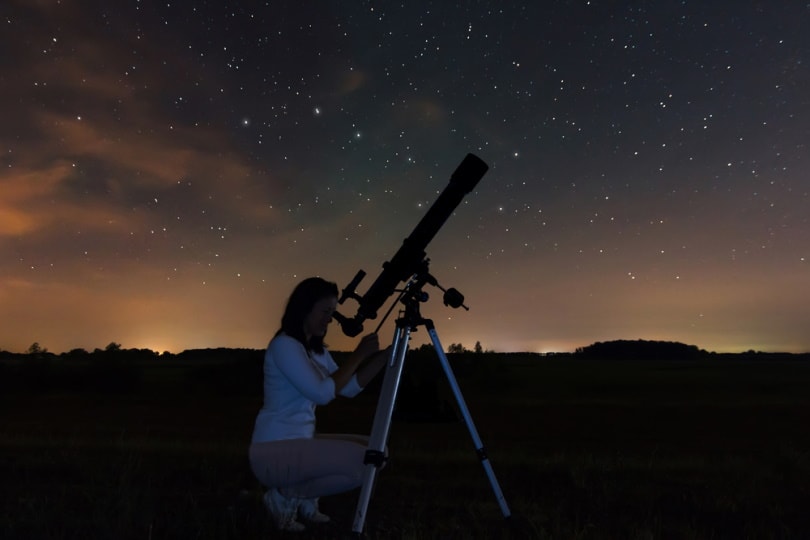
8. Spacecrafts have orbited and landed on asteroids
- NASA’s Galileo Spacecraft: Galileo was an American space probe that was designed to study Jupiter, its moons, and the asteroids Gaspra and Ida. It was the first spacecraft to visit not only one but two asteroids, both of which it took close-up images of in 1991. Galileo even discovered the first asteroid with its own moon while taking pictures of Ida, an S-type asteroid. This moon is now called Dactyl and is the first confirmed satellite of an asteroid. This discovery led scientists to believe that asteroids with moons were more common than they had thought, primarily since they had found one so quickly.
- NASA’s NEAR Spacecraft: NASA’s NEAR (Near Earth Asteroid Rendezvous) spacecraft was the first human-made object to successfully orbit and touch down on an asteroid. For over a year, NEAR studied the near-Earth asteroid, Eros, from orbit. Although the spacecraft was not designed to land on the asteroid, flight controllers attempted to anyway. Against all odds, NEAR had a nominal touchdown and returned valuable data for about two weeks.
- Japan’s Hayabusa Spacecraft: Japan’s Hayabusa set the record for being the first spacecraft to not only touch down on but take off from an asteroid as well. After arriving at the asteroid Itokawa in September of 2005, Hayabusa studied its shape, spin, topography, density, composition, and color. In November of the same year, Hayabusa landed on the asteroid despite some technical difficulties and collected a small sample of asteroid regolith which it returned to Earth in June of 2010.
- NASA’s Dawn Spacecraft: NASA’s Dawn spacecraft launched in 2007 on a 4.3 billion mile journey to explore the two largest known asteroids, Vesta and Ceres. Dawn accomplished many firsts and found compelling evidence that leaves us wanting to know more about these two mysterious worlds. When Dawn visited Vesta, it found hydrated and carbon-rich material that was unexpected based on early telescopic observations of the asteroid. It also found that Vesta is the parent of HED (howardites, eucrites, and diogenites) meteorites, with a large basin on its south pole suggesting a connection between a large collision on Vesta and all HED meteorites. After Dawn’s tour of Vesta, it took a trip to a dwarf planet within the asteroid belt, Ceres. Here, Dawn discovered an ocean world with evidence of recent geological activity and organic materials. This evidence leads scientists to believe that Ceres might be able to support microbial life.
9. An asteroid likely caused the dinosaur extinction
For the first 175 million years of their existence, dinosaurs of all sizes, shapes, and colors roamed the Earth. However, about 66 million years ago, dinosaurs and several other animals seemingly disappeared over a relatively short period. This suggests that the dinosaurs underwent a mass extinction, with a catastrophic event likely resulting in their demise. Scientists call this the Cretaceous-Paleogene extinction event and hypothesize that the impact of a large asteroid on Earth may have sealed the fortune of the dinosaurs.
If a large enough asteroid impacts the Earth, enough ash and dust could be thrown into the atmosphere to effectively cause a “nuclear winter.” The thick clouds of the asteroid ejecta would be dense enough to block the sun’s rays, causing temperatures to plummet to sub zero levels. This would also lead to a period of darkness, prohibiting plants from photosynthesizing and initiating a large-scale famine.
The impact could have also produced monstrous tsunamis, forest fires, and volcanic eruptions across the globe. Some geologists suggest that there were multiple impact sites, but it is widely believed that the Chicxulub crater along the northeast coast of Mexico’s Yucatán Peninsula is the collision zone. The crater, which is 110 miles in diameter and 12 miles in depth, is estimated to have been created by an asteroid 6.2 miles in diameter.
In more than 50 excavation sites worldwide, scientists have found dinosaur fossils that date back to their extinction. Interestingly, layers of clay near the fossils contained unusually high levels of iridium, which is one of the rarest metals in the Earth’s crust. To put iridium’s rarity into perspective, only 3 tons of it are mined annually, so it is extremely rare to come across. However, iridium is a common metal in asteroids, which makes their discovery a curious anomaly. Scientists have used this discovery as evidence of an asteroid impact, with the eventual detection of the Chicxulub crater supporting this theory.

10. Life may have originated from an asteroid impact
For the first billion or so years of Earth’s life, the planet was a dry and barren desertscape. However, as time passed and the solar system matured, asteroids frequently plummeted to and collided with the Earth.
This sizable flux of asteroids may have delivered the ingredients necessary for the origin of life, such as water and carbon-based molecules. Asteroid impacts also terraformed the Earth’s landscapes, which shaped the progression of life by endangering some species to the point of extinction or by facilitating their evolution.
11. The brightest asteroid seen from Earth is Vesta
Vesta is one of the largest objects in the asteroid belt and is thought to be the largest asteroid, second to the dwarf planet Ceres. Vesta has an average diameter of 326 miles, making it about as wide as an average state in the US. Because Vesta is so large and has an unusually bright surface, it can sometimes be seen from Earth under very dark skies with the naked eye. Additionally, Vesta’s apparent brightness varies seasonally, so seeing it is dependent on a combination of the right timing and your location on Earth.
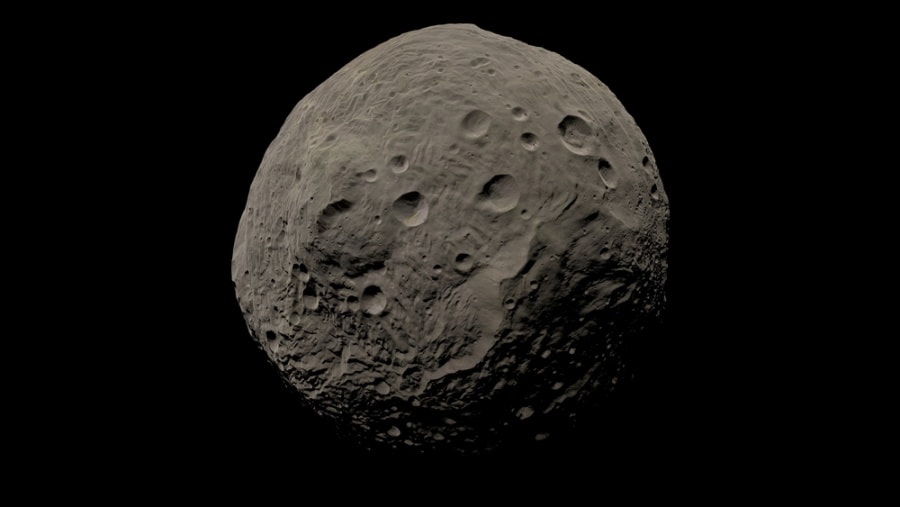

In Conclusion
In summary, asteroids are far more than just hunks of rock and ice and display some of the most interesting characteristics in the solar system. Although there are millions of asteroids, all of them are unique from each other in their composition and physical characteristics. Some asteroids orbit in binary, triple, or quadruple systems, while others become the moons of other planets. Asteroids also come in all shapes and sizes, with some even theorized to support a habitat for microbial life due to the organic compounds found on their surfaces.
Asteroids continuously provide scientists with valuable data that is helping us protect the planet from impacts and learn more about the formation of our solar system. The study of asteroids has even allowed us to unlock Earthly mysteries such as the extinction of the dinosaurs. As such, scientists will continue studying asteroids and learning more about their features and behavior. Perhaps, by studying asteroids extensively, we will even be able to use them to generate fuel for our spacecraft or mine their rare and precious metals in the future.
Featured Image Credit: Bouragaa Boukhechem, Pixabay
Table of Contents
- The 11 Interesting Facts About Asteroids
- 1. Asteroids date back to the birth of the solar system
- 2. Asteroids are irregularly shaped
- 3. Most asteroids are found in three regions of the solar system
- 4. Asteroids can have moons and rings
- 5. Asteroids are rich in resources
- 6. Asteroids fall into three main categories
- 7. Scientists track asteroids
- 8. Spacecrafts have orbited and landed on asteroids
- 9. An asteroid likely caused the dinosaur extinction
- 10. Life may have originated from an asteroid impact
- 11. The brightest asteroid seen from Earth is Vesta
- In Conclusion
About the Author Robert Sparks
Robert’s obsession with all things optical started early in life, when his optician father would bring home prototypes for Robert to play with. Nowadays, Robert is dedicated to helping others find the right optics for their needs. His hobbies include astronomy, astrophysics, and model building. Originally from Newark, NJ, he resides in Santa Fe, New Mexico, where the nighttime skies are filled with glittering stars.
Related Articles:
Monocular vs Telescope: Differences Explained (With Pictures)
15 Crucial Facts About Ultraviolet Rays & the Sun
What Constellation Is Spica In? The Interesting Answer!
10 Interesting Leo Constellation Facts, Myths, and FAQs
15 Interesting Pegasus Constellation Facts, Myths, and FAQs
6 Interesting Sagittarius Constellation Facts, Myths, and FAQs in 2024!
What Are Constellations? Where Did They Come From?
8 Interesting Libra Constellation Facts, Myths, and FAQs
